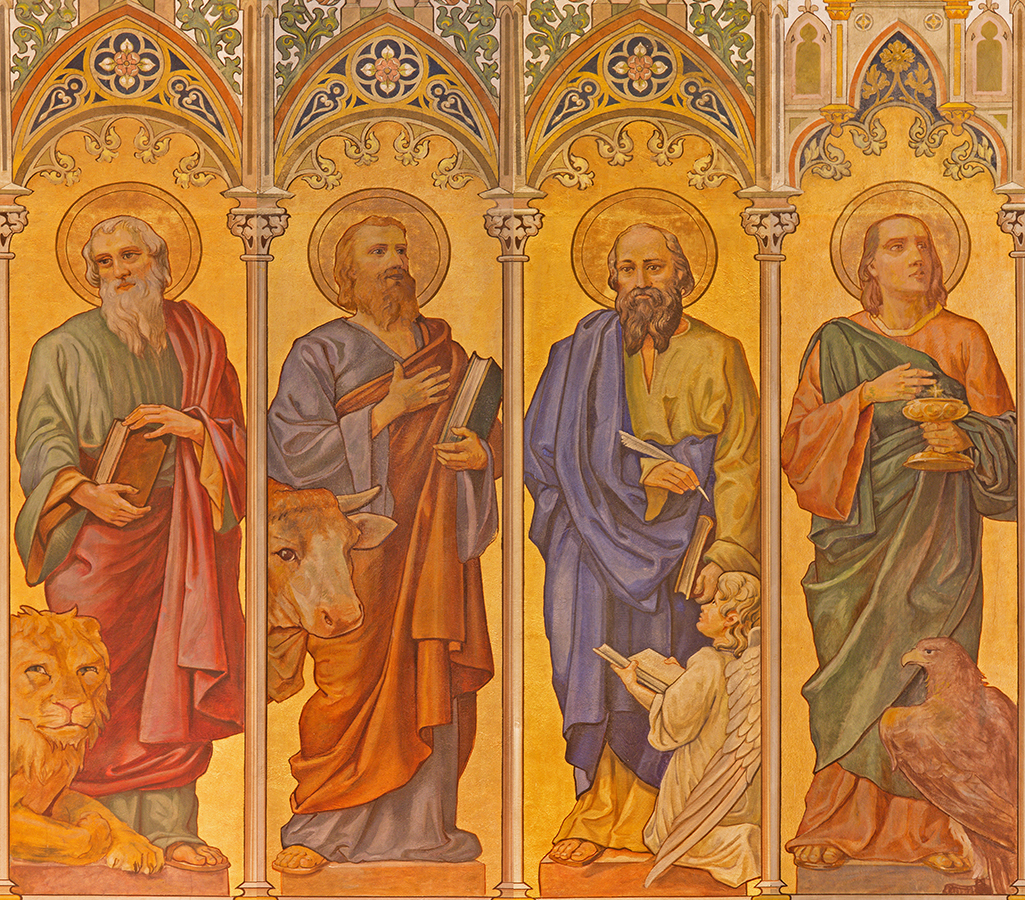By Sister Terri Bednarz
As Advent approaches, we anticipate hearing the Gospel authors reveal their perspectives on who Jesus was. Matthew and Luke include infancy narratives and genealogies, while Mark keeps with his motif of mystery, and John poetically identifies Jesus as the One who existed with God and became human. Each author conveys Jesus’ identity with an aim of addressing the concerns of their hearers.
The Jewish Messiah
It is well established that Matthew and Luke both used Mark as a source. This raises a curious point, Why did these two Gospel authors deem it important to add an infancy narrative and a genealogy when Mark had neither? A reading of the Gospel of Matthew reveals a strong emphasis on the Jewishness of Jesus. Matthew adds genealogical content that would identify Jesus as the long-awaited Messiah. The author also illustrates Jesus in the typology of Moses—as in Moses and the Commandments, Jesus and the Sermon on the Mountain, Pharaoh’s/King Herod’s Slaughter of the Innocents. For Matthew, Jesus was a faithful and righteous Jew, who adhered to and fulfilled the Law. Jesus rose to the status of a revered Jewish teacher (consider the Beatitudes). The emphasis on the Jewishness of Jesus suggests Matthew’s readers were largely Jews.
The Savior of All People
There are literary cues in the Gospel of Luke that point to an urban Gentile context, very likely a Roman structured city. Luke’s hearers seem to be primarily Gentile. The Gospel author portrays Jesus as the Savior for all people. Luke uses stories and titles that would resonate with Gentile hearers—the Virgin birth of the divine immortal, and the use of “Savior” and “Son of God” (these titles were associated also with the Roman emperor) and “Father” (a title associated with Jupiter). In this Gospel, these titles belong to Jesus and God. Jesus stands as the prophet of God. Gentile hearers would certainly identify with prophets and prophecies. The Lukan concern for those who are poor, for widows, for slaves, as well as his descriptions of harsh heads of households, reveal the oppressive context of the Roman urban environment and very likely reflect realities in the Lukan community.
The Mysterious Son of God
The Gospel of Mark addresses an audience grappling with the identity of Jesus. Who was/is Jesus? Where did he come from? This is the earliest Gospel (ca. 65-70 CE), and it leaves us wondering if the disciples ever understood what kind of Messiah Jesus was. Jesus’ followers, the Jewish people, and the Jewish leaders repeatedly fail to understand. Mark depicts Jesus as very human—Jesus gets tired, hungry, angry, cries, feels compassion, grieves, doubts and cries out, questioning why God abandoned him. The beginning of Mark gives the hearers only the cryptic and sudden appearance of the adult Jesus; and the ending of Mark (16:8) leaves hearers puzzled. Why end the Gospel in this troubling way? Mark leaves us yet another mystery with which to grapple.
The Word of God
The Gospel of John depicts Jesus primarily as the divine being, the Word of God, who existed with God in the beginning and is one with God. Strikingly different from the Gospel of Mark, the Gospel of John emphasizes an exalted view of a very self-assured Jesus. John stresses that Jesus became human to reveal God to the world and leaves no question about Jesus’ identity. The poetic prologue and the unique Johannine stories reinforce Jesus’ divinity. Apart from the ubiquitous motif of “love,” there is little expressed regarding Jesus’ humanness and there is not the range of human emotions as found in Mark. Jesus is mission-driven and confident. He lives up to his designation as the Word of God through teaching after teaching and speech after speech. The hearers of this Gospel are no doubt assured of the divinity of Jesus and Jesus’ love for them.
The beginning of Jesus’ story differs with each Gospel author. The distinctions in the portrayal of Jesus give us insights into how the early communities struggled with who Jesus was/is for them. And we see how the context of the communities played a critical role in why the Gospel authors wrote their Gospels in the way that they did.
